The contemporary dance world takes great pains to disembowel the stereotype of the mindless dancer—an automaton whose mind is erased by a life of training. One way to accomplish this is to portray the female body in a new way, or to engage with or acknowledge the feminist conversation. Ideally, political dances propose new perceptions of the world that alter and challenge our views. I do not think myself a misguided idealist to believe in this. In the dance world, and in contemporary art as a whole, this progressive viewpoint is nothing new.
RechtsRadikal, a dance by Christoph Winkler shown recently at Sophiensaele in Berlin, tackles the subject of women in extreme right-wing political groups. The dance phrases were strained and tense, with neck and face muscles visibly protruding, intermingled with ‘come-hither’ positions on the floor, buckled knees, cocked heads, a palm flexed upwards and arms glued to the body like an anime character.
Throughout, the performers have a meaningful look in their eyes. Their expressions shift, as does the texture of movements that they embody. However, their searching gaze never changes. What does it imply? We are never enlightened. I read this gaze as a reference to the myth that being a woman is hard, complicated, that women harbor pain and mystery, and yearn to be wordlessly understood.
Videos of masked rally-goers and a speech by NPD politician Holger Apfel peppered the piece amid yuppie-liberal chuckles from the audience. This dance, performed by four women and choreographed by a man, frustrated me for failing to deal with the subject matter it relies on.
Many peers are of the opinion that the choices you make about space, time, and how to portray a body on stage are inherently political. RechtsRadikal, despite a controversial question on the relationship between the female body and right-wing politics, did not make the risky choices required for such loaded themes. Instead, it relied on its topic to get funded and be produced, objectifying the female body and promoting old stereotypes in the process.
The four performers expressed frustration that despite their efforts to engage Winkler in a discussion, he never explained his motivation or inspiration, nor did he describe the statement they were to make in dealing with these controversial topics. Their process was focused on body states, physical aesthetics, and locations in space. Aside from the white masks they don in one section, the videos of rallies, the NPD recording, all of the obvious, defined and ‘contextual’ information, there was no conversation on the relationship between the dance and the politics.
Thus the female body is used as a vessel to illustrate information, and to create a pleasurable viewing experience, but the performers are not privy to the deliberation, decision-making, conflict, or inspiration for the piece. They are never given an opportunity to question it because they are not informed. Given their state of ignorance, their job was to be a female dancer. They were not hired to think, they were hired to move.
I expect more. I am sick of the old stories: the mindless dancer, the silent woman suppressed, angry and unable to speak out against an authoritarian milieu that she was born into, and that neo-nazis are bad and still exist and we should still be scared of them.
What I see when I look at this piece of dance is an exciting grant application. Picture four powerful dancers moving fiercely about the stage, offering penetrating stares probing the audience, while a halo of neo-nazi propaganda circles overhead, and presto, it will be funded because of this and Winkler’s reputation, not because of what he proposes to do. RechtsRadikal advances nothing. The female bodies are paid to be female. The dancers are paid to dance. The professional performers are not paid to think, to learn, to say something, or to contribute to the intellectual creative process of this piece. Their experience as women from Israel, Poland and two from France (a country with a much larger extremist right-wing party than Germany) is never called upon. They are not asked to speak. They are asked to hold their bodies tense, stare audaciously, hold their breath, throw their heads back, and shake violently.
Words by Louise Trueheart
Illustration by Judy Mièl

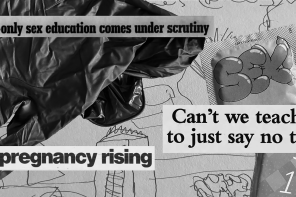

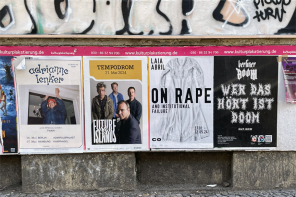
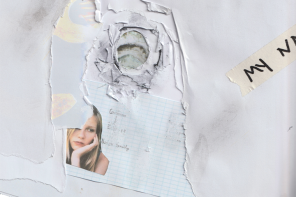

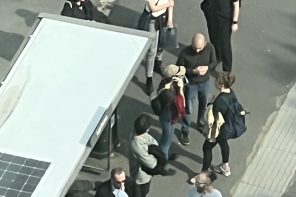


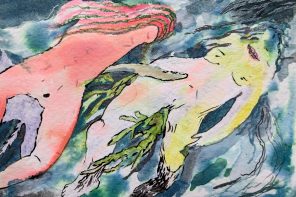

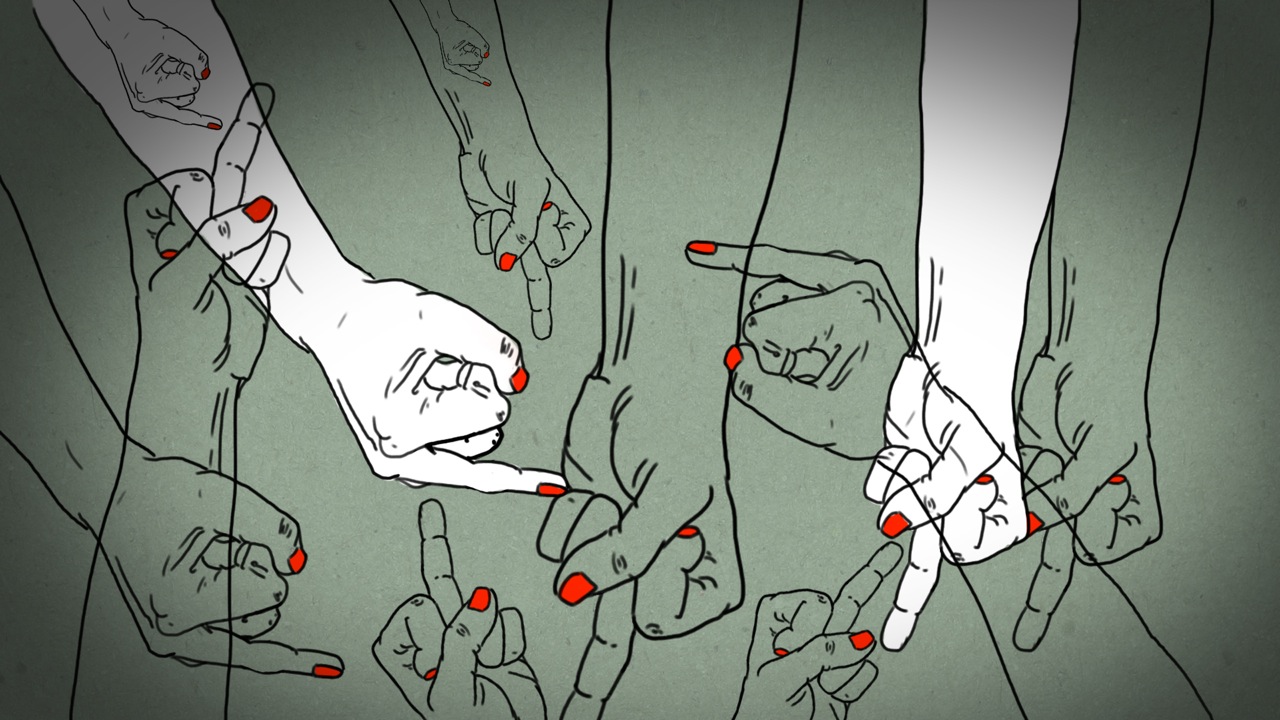


Thank you for your article! It provoked some thought I wanted to share – That choreographer comes (I think) from a tradition of german dance-theater. The approach to art there is that the artist doesn’t have to explain anything at all. They want the audience to interpret things however they want, also the approach to the dancers is the same.
this paragraph for example – The four performers expressed frustration that despite their efforts to engage Winkler in a discussion, he never explained his motivation or inspiration, nor did he describe the statement they were to make in dealing with these controversial topics. Their process was focused on body states, physical aesthetics, and locations in space. Aside from the white masks they don in one section, the videos of rallies, the NPD recording, all of the obvious, defined and ‘contextual’ information, there was no conversation on the relationship between the dance and the politics.
This is sort of ok and acceptable method of working. Choreographers don’t have to discuss about their art with the dancers if they don’t want to. Historically this way to work was promoted by Pina Bausch very much. Maybe you know but she was very bad in speaking and never wanted to explain anything about her art, not to anyone, including her dancers. And she said that whoever comes to her shows can make their own story about what is it. That was important for her. And also many other choreographers work like that today including for example Meg Stuart and An Kaler. As far as I understand they do it because it puts the dancer in a certain position where they have to produce dance material for the choreographer but they are not sure how or why, and this insecurity is something interesting for these choreographers.
What I think you are totally right with, is that it also exposes some sort of ideology of the choreographer (Christoph) in terms of the aesthetics of the piece. Which is probably quite conservative.
And then you see, the dancers are not “mindless”, they are or can be very creative in their own field – how to perform – but they have no say about the general political statement the whole thing he makes. They are sort of fulfilling their role – the workers. (i wonder if it’s in any way similar to the position of those women who were part of these right-wing parties, in this case you can say that he is the right-wing party leader or something and they work for him, because they also agree to some degree with his ideology, otherwise they would quit?)